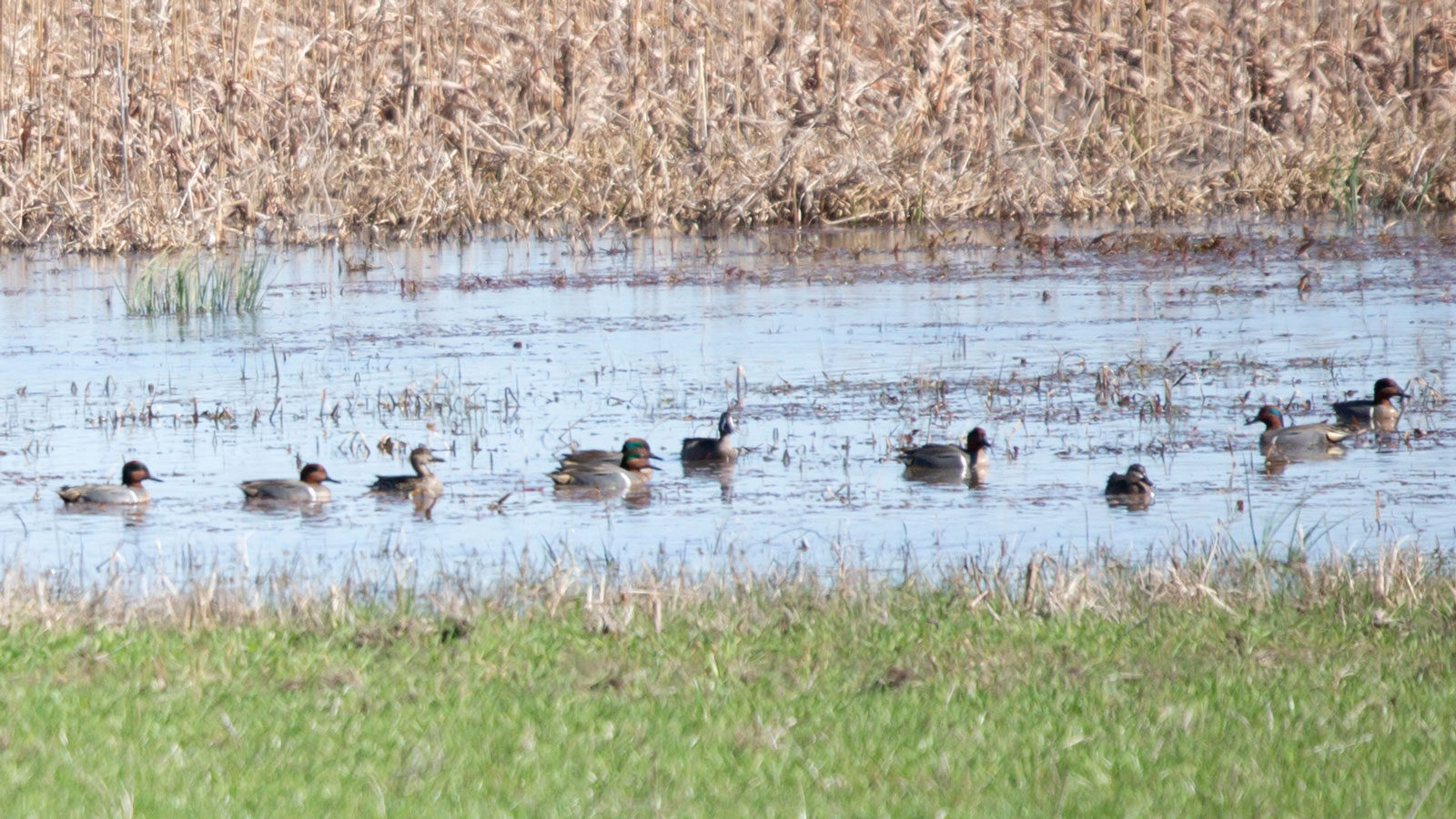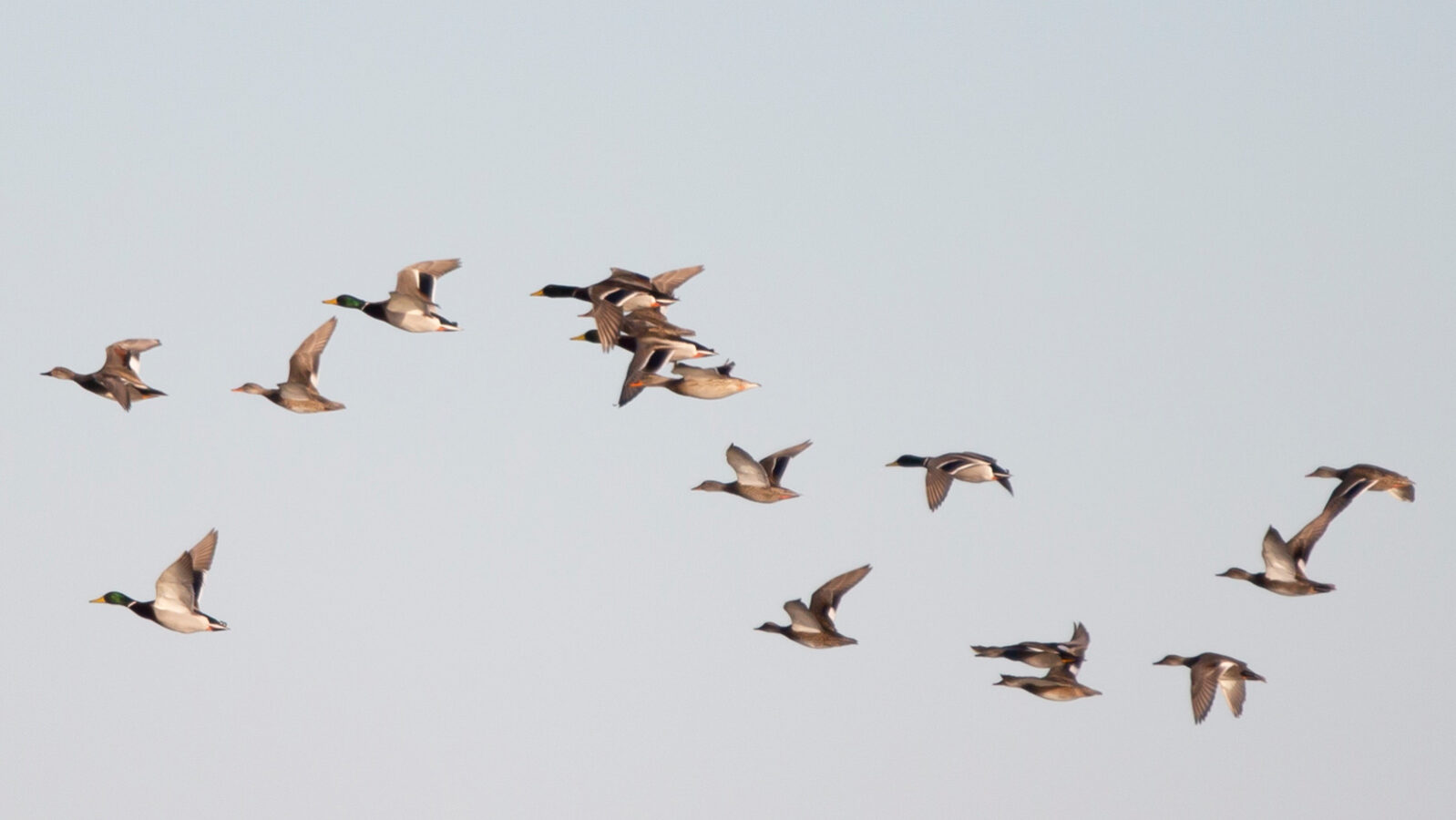
Did you know that northern pintails can fly 48 miles per hour?
Northern Pintails
at
a Glance

Key Features:
Male northern pintails are gray ducks with brown heads and necks with a white stripe on their necks, and white chests. Females are brown and white.
Least Concern - Population Decreasing
Habitat:
Bays, estuaries, grasslands, lakes, and reservoirs
nesting habits:
Northern pintails build nests on the ground by digging depressions and lining them with down and grass.
seasons Northern Pintails are active in our area:
Winter
Diet:
Aquatic insects, crustaceans, grains, seeds, snails, and worms
hunting Behavior:
Northern pintails forage by scooping up their food.
Commonly Confused With:
Blue-Winged Teals, Cinnamon Teals, Gadwalls, Green-Winged Teals, and Mallards

Female northern pintails are often confused with female green-winged teals because both are brown ducks. Female northern pintails have lighter crowns.

Male northern pintails are often confused with male gadwalls because both have brown heads. Northern pintails have longer necks than gadwalls.